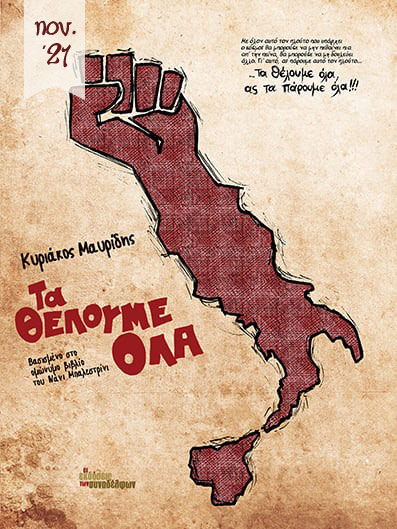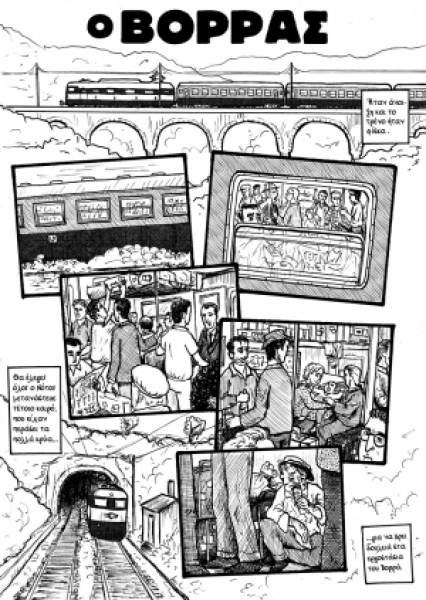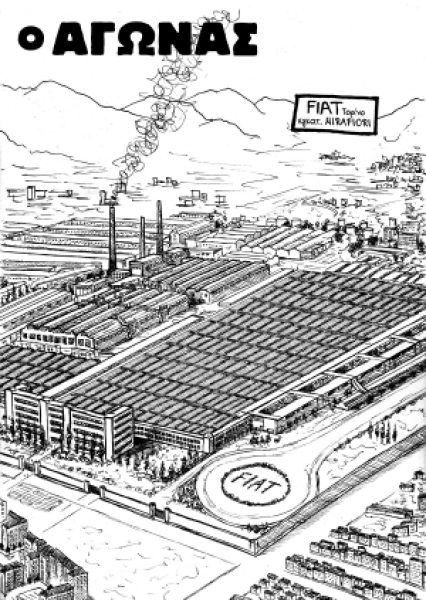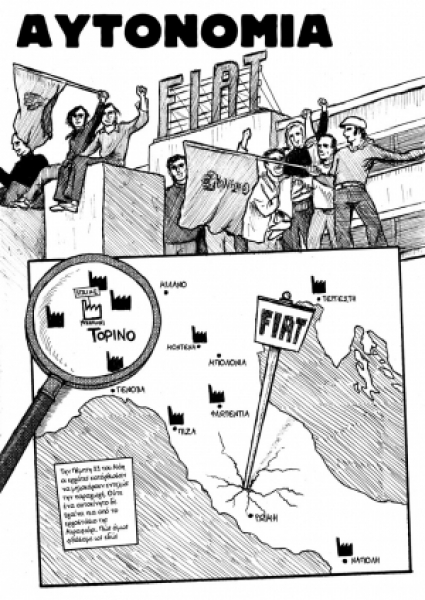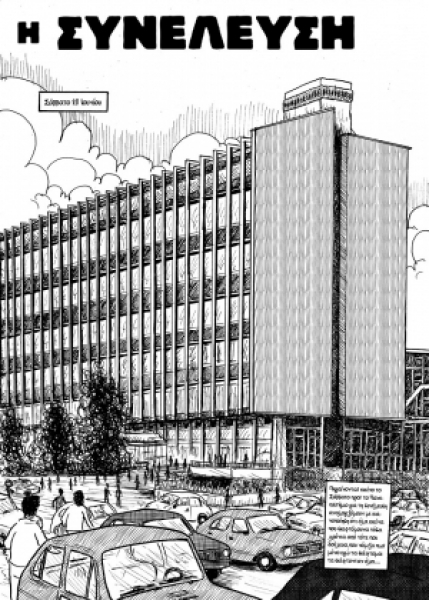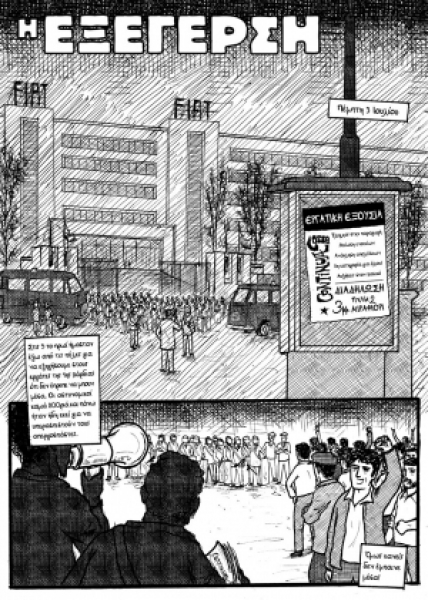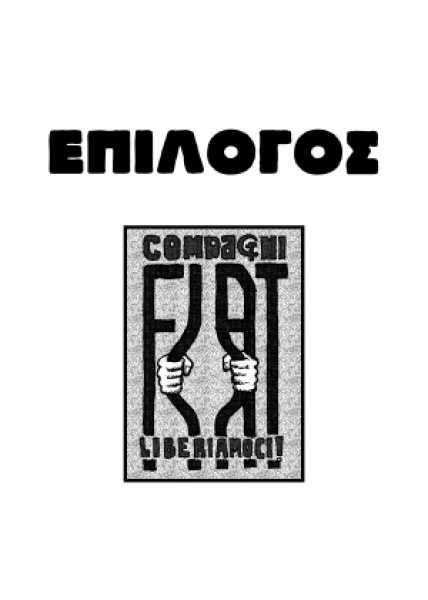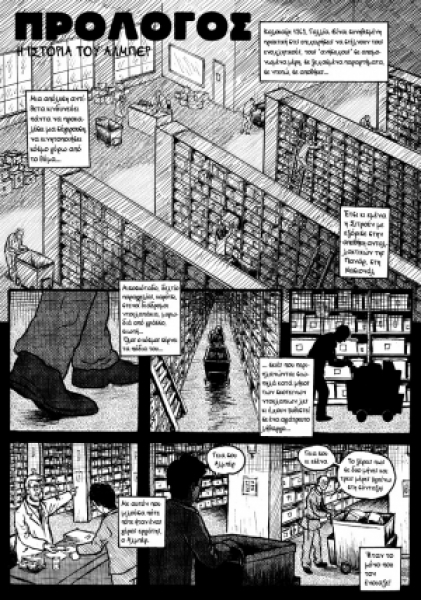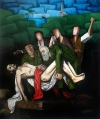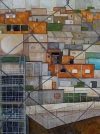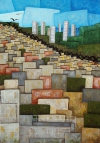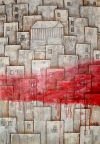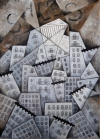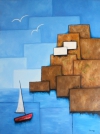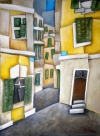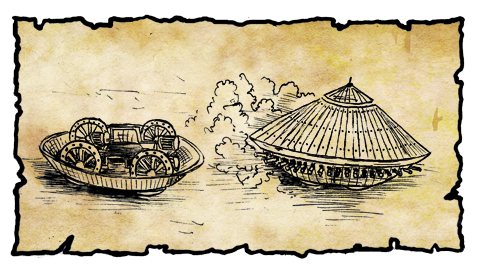
"My Lord,
you ask for my sketches as a friend
but you will use them
as a King"
from my new comic "Leonardo: The dream and the Nightmare" (temporary title)
Displaying items by tag: (pseudo)cubistic
This is one of my favourite appropriation works. It combines many of the themes that interested me in painting (appropriation, (pseydo)cubistic landscape, mannequin figures).
The work behind it belongs to Caravaggio and is called The Entombment of Christ (1602–1603). After watching a photograph of Che Guevara a few moments after being murdered, I was amazed by the great resemblance of his face and the face of Christ in Caravaggio's painting. That was the starting point. The second inspiration was my journey in Cuba, the spring of 2008. Afterwards, my ideas cleared a lot about the general meaning I was hoping to achieve and it was inevitable to carry on with the painting.
Apart from the face of Che I changed the whole upper segment of the painting (the group of people holding him and their background). I gave military clothes to the two persons holding Che (one of them reminds Fidel) and behind them I used mannequins with a shift from a Picasso-like face to a oval face like the ones Dali used to create and then another transformation to more cubical forms to match with the geometrical dismantling background of Cuba on top. I added a spanish ship (like the one Colombus used when he discovered Cuba) approaching the island and the Monument of Revolution with the statue of Martin X ready to confront it.
This landscape is based on a photograph of favelas in Rio. It is actually the same subject with the painting Fences ( different photo of the same site). Using the (pseudo)cubistic technique led to me to some simplifications but i kept some of the figurative elements like windows, or fences. The big wired fence that covers the whole painting was also in the photo.
This painting is inspired by pictures of favelas. Some of the photos are added in the gallery below. They were refenence photos and i felt free to add things.
Some of the colors (especially some metal ones) change value depending on the position of the viewer and light -something which cannot be seen easily in the photos of the painting.
This painting was made after a photo of a picturesque village-town in the province of Salerno, in the region of Campania, in Italy, called Amalfi. (You can see a photo of the town in the gallery). I have used a similar technique with most of my other landscapes -and judging by the color range and the layout, this painting shares a lot in common with the painting called Corfu rooftops.
This work was meant to be a pair with the first Athens painting. It uses the same pseudocubic technique with most of my other landscapes. Here the city is more monochromatic so as to make contrast with the red zone in the middle.
I have my doubts about the finished painting (especially for the red zone over it) as it may seem to be a rather provocative work with no actual depth. It was an excuse for me to use various techniques (as for the colors) but the final result, i think, is less powerful than i hoped.
This is an almost cubistic landscape of Athens. There are two major influences for this painting: cubism of course and the political situation in Athens and Greece. Although the work has some similarities with many cubistic paintings (the color range, the scattered forms, the letters etc) I am relectant to call it cubistic as its rectangle forms don't offer a 3d view of the objects (buildings) but resemble rectangles on top of each other (like i did to a greater extent in many other landscapes).
This landscape, using the same pseudocubic technique as most of my landscapes, depicts an aerial view of the corfu town and was inspired by a real photo. When i saw it, i was fascinated immediately by the inner structure and geometrical shapes of the picture.
Moreover, i wanted to create a large image using these rectangles with different color and shades with a high emphasis on the rooftops, which is a distinctive feature of corfu town.
This is another pseudocybistic painting depicting an imagery aegean island and a red boat approaching (with the sign Hope). Initially I used this landscape as an excuse for a quite an abstract composition but as the painting was ordered by a friend of mine I added some details (like the ship for example) to make it more "representational".
(private collection)
Alexandras is a beautiful street with big trees on each side, at the center of Corfu Town. In this painting, I tried to apply the pseudocubic style to some urban landscapes from a closer view. I'm quite satisfied by the different and wider color range even though i'm not so sure about the painting as a whole.
Now in Bookstores
We Want Everything
the publications of colleagues, Nov. 2021
Summer of 1969, Italy. A year after May '68, FIAT workers began a dynamic and unmediated strike against their powerful boss. Their struggle marked the beginning of a decade of workers' and students' mobilizations and the rise of the Autonomy movement. It was characterized by many as the last invasion of the working class into the sky. Last ... let's hope until the next one ...
